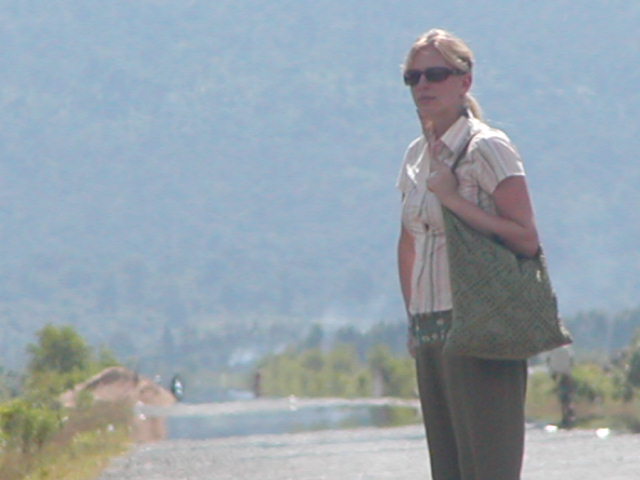
It's been a mindblowing last month in Northern Australia and as it's now time to leave i'll share a few pictures and words with you....
I think most of you pommies will recognise this acrobat...yes it's Emil upside down (as usual) or is he the right way up since Oz is upside down anyway? Oooh far too confusing for this blonde.
We spent a fabulous couple of weeks in a camper van traveling the East coast (which is sooooo over rated by the way). Here he is at Lake McKenzie on Fraser Island.
 Bloddy hell, the North of Oz is absolutely teaming with these deadly beasts. You can't swim anywhere without the threat of having your legs snapped off .You can however, do fantastic boat trips and get dangerously close to these amazing crocodiles in the wild. Some that we saw were up to 5 meters long!
Bloddy hell, the North of Oz is absolutely teaming with these deadly beasts. You can't swim anywhere without the threat of having your legs snapped off .You can however, do fantastic boat trips and get dangerously close to these amazing crocodiles in the wild. Some that we saw were up to 5 meters long!We met this one just outside Darwin but saw others in Cape Tribulation, North Queensland.

Now these are far more friendly...
Rock Wallabies at granite Gorge, Queensland where I spent a couple of weeks traveling with my mum.

Giant termite mounds, Kakadu National Park, Northern Territory.
Termite mounds litter the landscape in the outback. In fact there are more termites then any thing else in Australia. A termite is about the size of an ant so you can imagine it takes billions to mix their saliva with dirt to make these colossal nests. This one took about 60 years to make and is still growing today.

Aboriginal rock art in Kakadu National park has been estimated at between 10,000 to 50,000 years old, making it some of the oldest art in the world. These predictions are based on geologists research of the rock and also in the drawings themselves which feature extinct animals. The art features a range of images most depicting sources of food such as this fish, snake, and kangaroo. It was believed that by celebrating hunting achievements in this way it would make food (which was often scarce) more abundant. More scared art depicting "dreamtime" or spiritual links to ancestors is not allowed to be viewed by the public for cultural reasons. You can imagine, that with no written history these artifacts are of immense importance to indigenous Authralians. The 22,000 square K's of Kakadu is 60% indigenous owned and the rest remains in land disputes. Tourists only have access of about 1% of the park, but it is known that the rocks throughout this vast space are covered in art. It is believed that the Aboriginals worked as hunter gatherers for only about 4 hours per day so there were long periods of time when they had little to do. Art was as much a leisure activity as it was a means of communication and teaching.

The natural beauty of Kakadu is unmatched in all of Australia in my opinion. This is just one of the amazing waterfalls we swam in (crocodile free thankfully!). The water was so pure and fresh, especially after hiking in 30 degrees.
